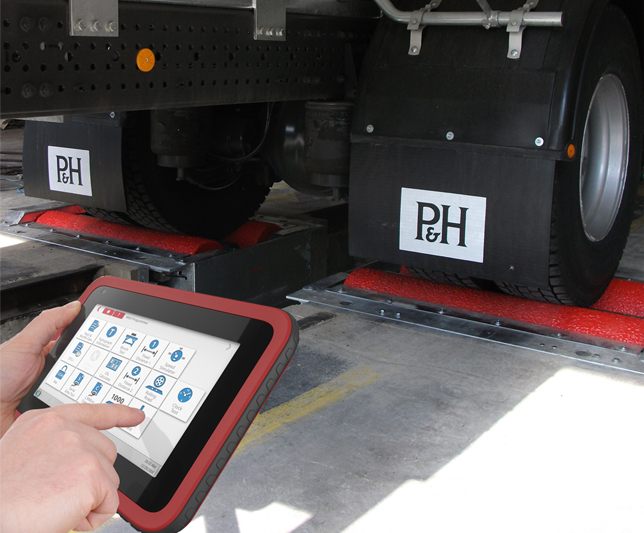When it comes to brake testing, different site conditions can produce different results. CVW considers the variety of factors that should be taken into account – both when preparing vehicles, and during the test itself.
Any successful workshop will understand the importance of time efficiency, and ensuring your brake testing procedure is done correctly can have a big influence on that. Below are some key points to take into account when brake testing in your workshop.
1. Wheels making contact with standing water prior to entry onto the brake rollers can cause the maximum brake force value to be lower than it should be. In particular, if only one side of the vehicle makes contact with water, the same will apply, and a potential failure or imbalance may also arise. It’s not only water that can cause this, but also mud, which sticks to the tyres and can produce an even more inconsistent reading.
2. The vehicle being tested needs to be positioned correctly in the rollers. Failing to do so could produce a false imbalance reading – and if both wheels on the test axle do not lock, this would result in a failed test.
3. After a vehicle has undergone brake maintenance works, such as fitting of new linings, it is recommended that the vehicle is driven on the road to ‘bed in’ the foundation brake system. This ensures that maximum efficiency during the test can be achieved.
4. Pay special attention to ‘ULTAST’ or un- laden tri-axle semi-trailer testing. In modern-day trailers, axle weights are lower than ever, and should the axle weight be 2,000kg or less, it may not be able to achieve the minimum statutory requirements. For example, if the axle weight is 1,500kg – which equals 750kg wheel test weight, then you would not expect much more than 50% in brake force. In this case, approximately 400kg would be achieved, with the minimum requirement being 500kg and also locking of the wheel. A preferred meaningful test is therefore only achievable when the vehicle is laden.
5. When testing a vehicle, in particular eight- wheel tippers, the air pressure system should be at least six bar. Failure to ensure that this is the case will result in a lower maximum brake force when the vehicle is laden.
6. With an applied handbrake test, on applying the hand brake, you must ensure that all of the air is exhausted out of the system to engage the spring brake chamber prior to starting the test. This is particularly important to avoid failure, as some brake systems can exhaust slower than others, which results in the wheel turning where it would otherwise have locked.
7. Ensure the gritted rollers of the brake tester are cleaned regularly. A wire brush is the recommended tool for the job. An increase in the roller’s diameter due to surface material can result in a premature lockout. Additionally, the middle slip roller of the brake tester should also be cleaned regularly using a scraper.

GEMCO offers a range of brake testers for commercial vehicles in its Sherpa range. These include the BPS MOBILE tester, the BPS KOMPAKT tester and the BPS TWIN tester.









